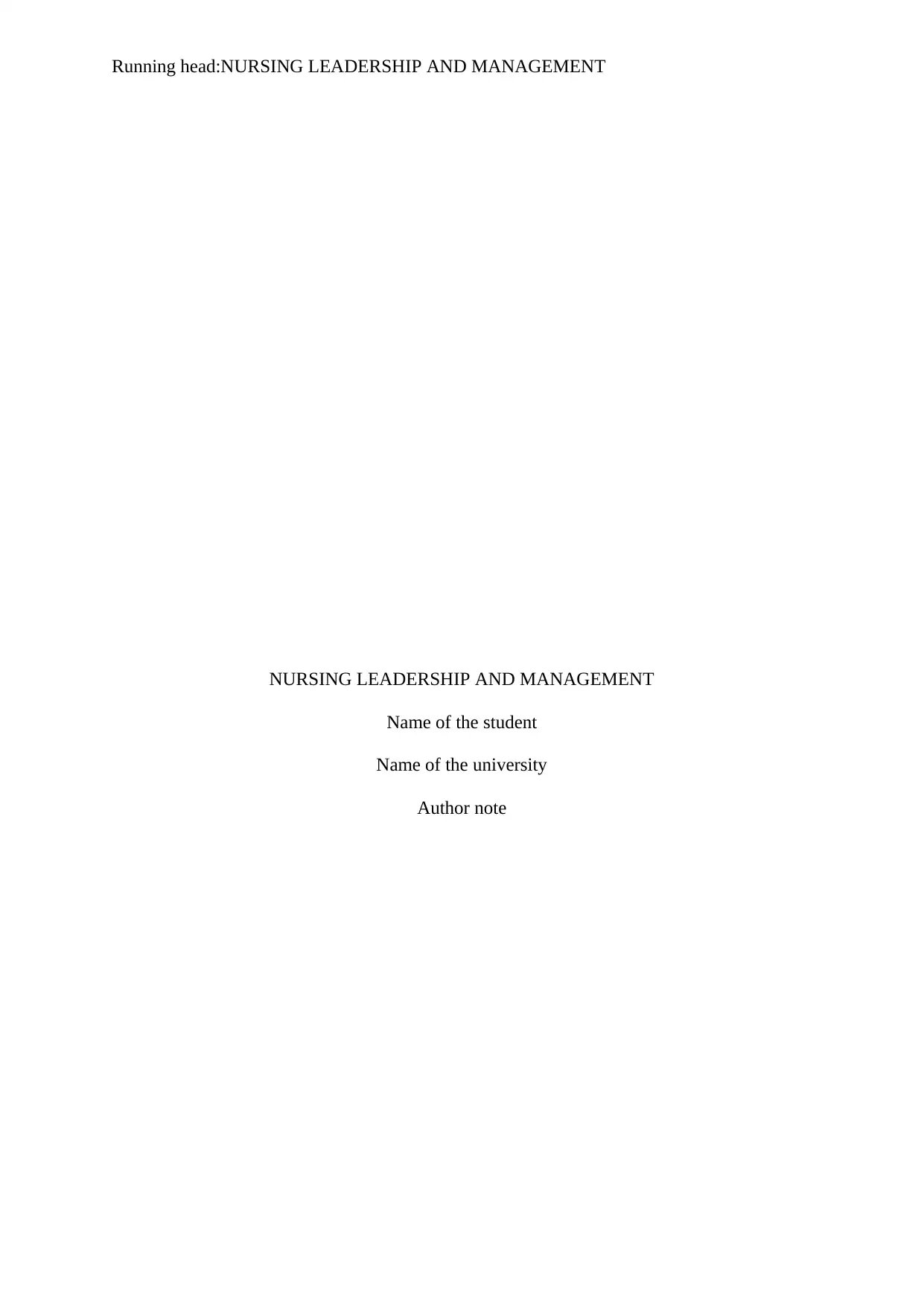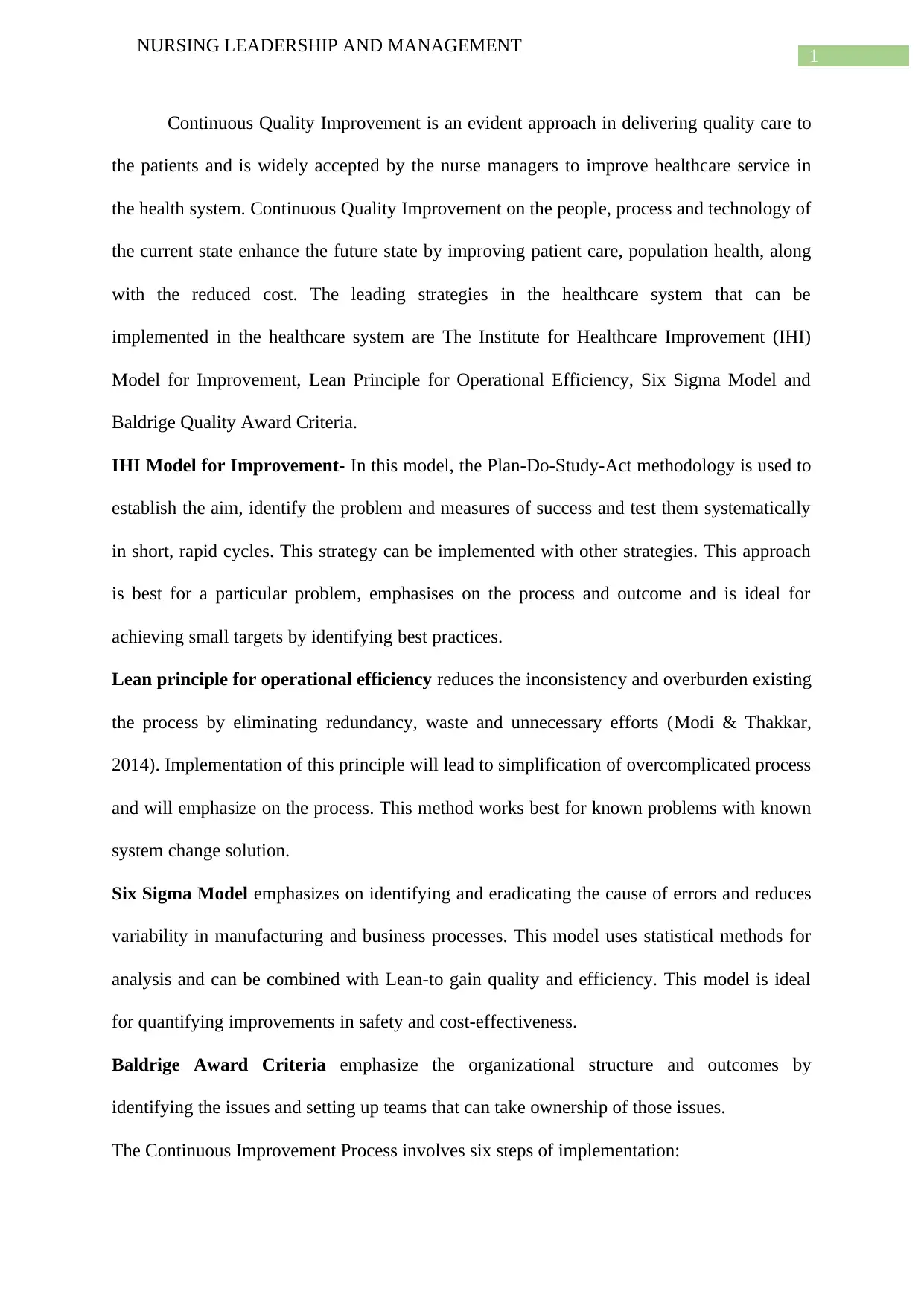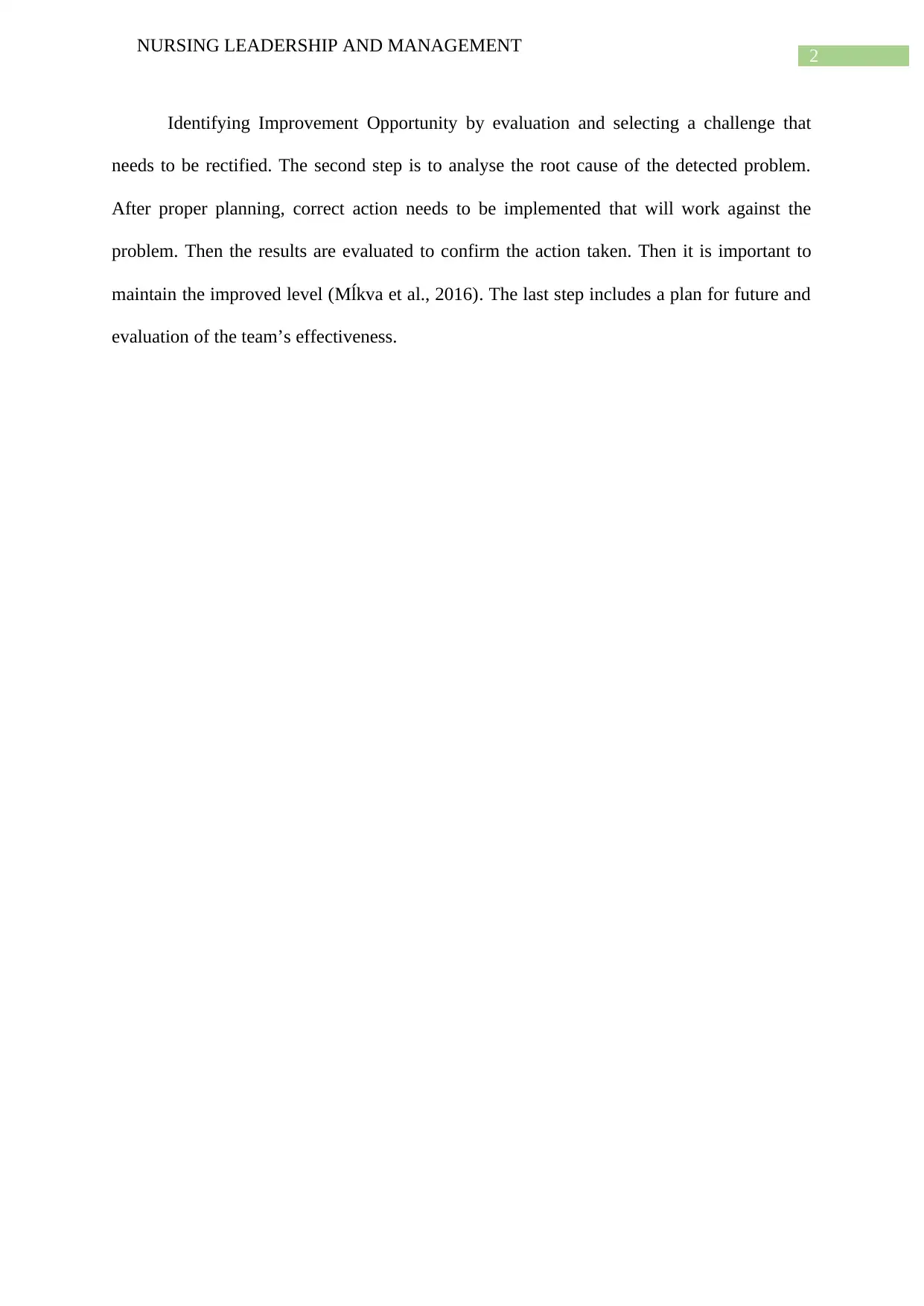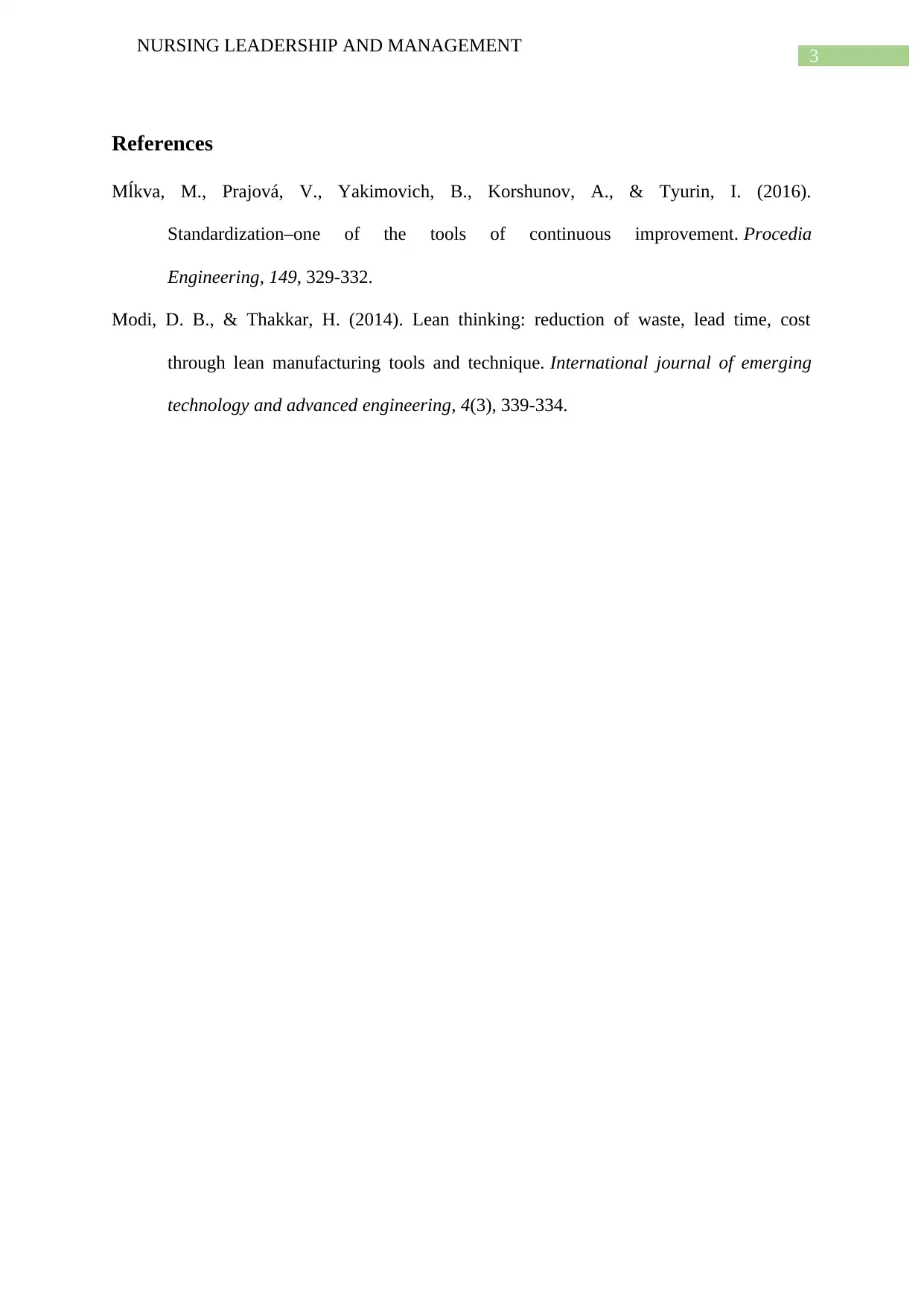Nursing Leadership and Management Report: Continuous Improvement
VerifiedAdded on 2022/08/19
|4
|528
|11
Report
AI Summary
This report focuses on nursing leadership and management, particularly emphasizing continuous quality improvement (CQI) in healthcare settings. It highlights the importance of CQI in enhancing patient care and reducing costs. The report explores key strategies such as the Institute for Healthcare Improvement (IHI) Model for Improvement, Lean principles for operational efficiency, the Six Sigma Model, and the Baldrige Quality Award Criteria. It explains how these strategies can be implemented to address specific problems, improve processes, and achieve quantifiable improvements in safety and cost-effectiveness. Furthermore, it outlines a six-step process for implementing CQI, including identifying improvement opportunities, analyzing root causes, implementing actions, evaluating results, maintaining improvements, and planning for the future. The report references relevant literature to support its findings.
1 out of 4











![[object Object]](/_next/static/media/star-bottom.7253800d.svg)